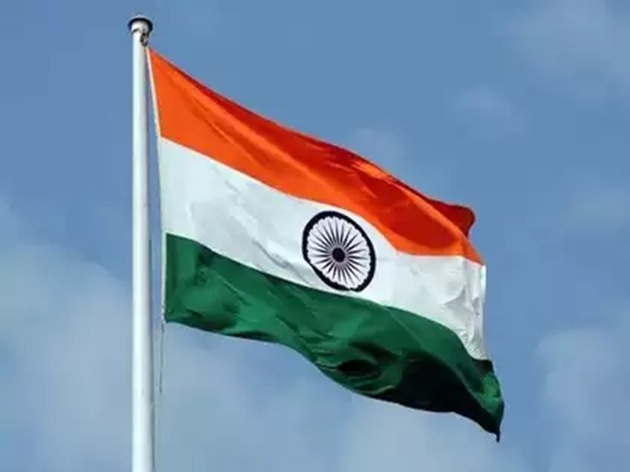India Uncovered: Fun and Interesting Facts About the Country
India, a land of endless variety, rich culture, and glorious scenery, is a fascinating place. From its vibrant cities to quiet villages, the country is full of contrasts which render it even more enthralling than words can tell. With its culture that blends ancient customs and modern innovation, India is not only a place to go to; it is also an experience that remains in your heart long after you leave.
The Flag

Let’s start with the flag. Just like any other flag, this one too carries the history and pride of its people. The Indian national flag, or the Tiranga, is arguably the most recognizable symbol of the country and one of the nation’s most important cultural and historical symbols. Tiranga is an abbreviation for “tricolour,” referring to the three horizontal stripes that make up the flag: saffron at the top, white in the middle, and green at the bottom. At the center of the white stripe is a navy-blue wheel, known as the Ashoka Chakra, featuring 24 evenly spaced spokes.
The flag was officially embraced on 22 July 1947, just a couple of weeks before Indian independence from the British. It was developed based on the Indian National Congress flag, which was the driving force behind the independence movement. The Congress flag, whose initial design had the spinning wheel featured prominently on it, represented self-reliance and the promotion of hand-spun cloth. This was later replaced with the Ashoka Chakra, a design based on an ancient pillar built by Emperor Ashoka, which depicts justice, progress, and the never-ending wheel of law.
Each colour of the Tiranga has a particular significance. The saffron band signifies courage, sacrifice, and the spirit of renunciation. White signifies peace, truth, and honesty, and green signifies faith, fertility, and prosperity. Together, they are symbols of the ideals and aspirations of a nation that honours unity in diversity. The Ashoka Chakra adds another depth of symbolism, signifying relentless movement and progress. It symbolises that India must always move forward, change, but stay the same to its ideals of justice and equity.
Aside from its symbolism, the flag is something to be proud of and a source of identity for Indians. It is flown on major national holidays such as Independence Day and Republic Day when citizens all over the country celebrate with flag-hoisting ceremonies, parades, and performances of traditional culture. Whether raised high over government offices or waved with fervour at cricket matches, the Tiranga symbolises the unity of over a billion people. It is a testament to India’s freedom struggle lasting so long and its ongoing trajectory as a democratic and multicultural country.
UNESCO Heritage Sites
India has an incredible quantity of UNESCO World Heritage Sites, and it is a culture buff’s and history enthusiast’s haven. With more than 40 sites listed, there are old temples and monuments as well as natural phenomena included. The Taj Mahal in Agra, a globally renowned landmark, is a no-brainer, celebrated for its breathtaking white marble and love story. Aside from this, the Ajanta and Ellora caves present ancient Buddhist, Hindu, and Jain art, while the imposing forts of Rajasthan narrate tales of royal splendour.
Mountain Peaks
India’s dramatic topography is occupied by the massive Himalayas, where some of the world’s highest mountains reside. Some of these are Kanchenjunga, the third-highest peak in the world, standing at over 8,586 metres. Sacred to local culture, they are both natural and holy symbols. Adventure and scenic tourists flock to these places with their trekking and climbing poles, and the valleys surrounding offer serene getaways filled with monasteries, forests, and traditional mountain ways of life.
Spice Capital
Being the spice capital of the world, India has long been the center of the international spice trade. Ranging from the fiery chillies of Andhra Pradesh to Kerala’s fragrant cardamom, pepper, and cinnamon, the choices are limitless. Indian cuisine is built upon this wealth of spices, every state using them in their way to create their signature flavours. Historically, India’s spice trade dominated the market and introduced merchants from as far away as Europe, followed by a change in the dynamics of world trade and exploration.
Yoga
When someone hears the term “yoga,” they typically think of peaceful stretches and mindful breathing, and they can thank India for that. Yoga originated thousands of years ago in India as a physical and spiritual practice. Yoga blends movement, meditation, and philosophy to seek balance between body and mind. Yoga has evolved into an international phenomenon over the decades, but its origins remain tightly linked to Indian culture. Yoga is not just a form of exercise to Indians but also a way of being associated with spirituality and maintaining holistic wellness.
India is a country that never fails to surprise with its diversity, heritage, and vibrancy. From its symbolic national flag to its towering mountains, from being the spice center to its celebratory festivities, India has in store a mix of experiences as varied as they are rewarding. Whether you uncover ancient UNESCO ruins, study yoga in the Himalayas, or just dive into the colours of everyday life, India offers something to enchant and inspire all.